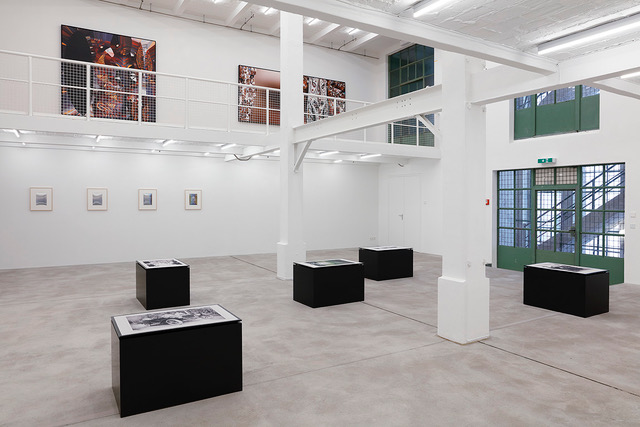Juergen Staack
UNSERDEUTSCH
19 JAN until 13 APR
Published 19 FEB 2024

Konrad Fischer Galerie is pleased to present the fourth solo exhibition of Juergen Staack (born 1978, lives and works in Düsseldorf).
Professionally trained as a photographer and later on master student of Thomas Ruff at the Kunstakademie Düsseldorf, Juergen Staack’s artistic work focuses on the relationship and transformations of language, sound and image, as well as their fragility and transience.
In search of rare or dying languages, he has traveled to large parts of the world, including Siberia, the Aleut Islands, the desert regions of North Africa and Central Asia and the South American rainforest.
The people and language of Papua New Guinea, more specifically those of the inhabitants of the former German mission Vunapope, are the subject of his current exhibition “Unserdeutsch” (Our German).
„Unserdeutsch emerged in the early twentieth century in what is today Papua-New Guinea in the southern Pacific, or more precisely, at the central station of the Catholic missionary order Herz-Jesu-Missionare (Missionarii Sacratissimi Cordis) in Vunapope on the island of New Britain (then called by New Pomerania by the German colonial authorities) in the island chain still known today as the Bismarck Archipelago. (…) As in other colonies, a proper competition developed among the various Catholic and Protestant missionary orders in German-New Guinea to convert the “uncivilized heathens” who were supposedly longing for salvation. The MSC Order ran a boarding school in Vunapope for ethnically mixed half-orphans; still today the speakers call themselves Vunapope Mixed-Race Germans, who were Christianized and instructed in German there—under circumstances that from today’s perspective are rather questionable. Parallel to learning German, the children and young adults created their own group language: Unserdeutsch.“ Siegwalt Lindenfelser
The main gallery is showing a collection of recent photographs by the artist, historical photographic material and documents from Papua New Guinea, initially printed on sand, then exposed to a process of erosion, changing over the course of the exhibition and finally disappear completely.
Portraits of “Unserdeutsch” speakers on Kincsem film become visible and disappear again depending on the position of the viewer. Videos and sound files recorded in Vunapope document the historical story of the Creole language “Unserdeutsch”.
In the upper gallery, Juergen Staack shows further new photographic works from the context of his trip to Papua New Guinea: traditional masks from New Britain were photographed using a photogrammetric process, digitally encoded and then printed on canvas. Each photograph in the “SKIN” series represents the entire surface of the respective mask.
